Mack Puts It All Together
On-Site: Mack Molding
To be “more than a molder”—it’s an ambition held by many top plastics manufacturers.
To be “more than a molder”—it’s an ambition held by many top plastics manufacturers. Few have pursued that goal farther than Mack Molding Co. and its parent company, Mack Group. The company that started in 1920 with custom injection molding has since added structural foam, two-shot molding, overmolding, and internal and external gas-assist molding—plus sheet-metal fabricating, CNC milling and turning, rapid prototyping, plastics design, printing/decorating, painting, assembly, test development, materials development, and total product manufacturing.
Mack specializes in combining its multiple talents to produce complex products. Increasingly, Mack defines itself as a contract manufacturer—a producer of major assemblies and complete products, even offering customers direct order fulfillment. Today, Mack is a $300-million company with 10 locations and 1800 employees in the U.S. and Mexico. Its six U.S. plants operate 120 injection machines from 28 to 4000 tons. They comprise a Northern Division with four plants and 84 machines, including operations dedicated to prototyping and medical products; and a Southern Division with two plants and 36 presses (as well as an automated paint line), specializing in large parts.
The headquarters plant in the wooded hills of Arlington, Vt., is a good example of the mix of capabilities that has fostered Mack’s success. It has 310,000 ft2, more than seven acres, under one roof. That houses 35 presses from 40 to 1000 tons, an enormous assembly floor (see photo), a new clean room for MackMedical, CNC machining and sheet-metal departments, and an Application Development Center.
MAKING MACK ‘CHINA-PROOF’
The corner office at Arlington belongs to Jeff Somple, president of Mack’s Northern Div. He has spent 24 years at the company and saw it go through a major upheaval and renewal around the turn of the millennium.
“In 1999 or 2000,” Somple recalls, “about 75% of our business was with three big computer companies—Sun Microsystems, Xerox, and Hewlett-Packard. All three legs of that stool fell off in one year, when that business went to China and Mexico.
Also, the Y2K computer bubble burst. Businesses stocked up on new computers in 1999—our best year ever, up to that point—and then bought nothing the year after. Fortunately, Mack is a private company that is financially conservative and carries no debt. We endured our first layoffs in the history of the company, but mainly temps. We kept our core people.
“We spent a day and a half feeling sorry for ourselves, then we got together, set up a whiteboard, and brainstormed. We asked ourselves, ‘What makes us relevant?’” The management group came up with these answers:
•Large-parts capability.
•Robust supply chain and skill at managing numerous suppliers.
•A professional quality system. Mack was one of the first in the U.S. to get certified for ISO 9000.
•Full-service capabilities—it had sheet metal, plastics, and a design group that specialized in disciplines such as design for manufacturability.
The next question was, “What are we not good at?” The answer: “Small parts made in high volumes with lots of labor. That’s what China is good at,” says Somple.
“We wanted to make our company China-proof. So we then asked, ‘What is China not good at?’ “1. Fast delivery—it takes 30 days to ship products across the Pacific.
“2. Supplying multiple flavors of a product quickly. That would require massive inventory.
“3. Upfront engineering collaboration.
“4. Protecting others’ intellectual property.
“The answer for us, then, was that we needed products that were ‘BBC’—‘big, bulky, and complicated.’ For example, we make office furniture that customers need quickly and in low volumes. We also decided that instead of a three-legged stool, we were going to build a centipede with a diversified customer base. The end result of this corporate redefinition, Somple says, was that “we lost money for just one quarter. We turned it around in 2003 and never looked back. We continued to do well through the last recession.”
REFOCUSED ON MEDICAL
In the midst of its rebuilding effort, medical markets seemed a promising target for Mack. “It’s not as likely to go offshore,” explains Somple, because of GMP (Good Manufacturing Practices) standards enforced by the U.S. FDA. “FDA makes OEMs responsible for their supply base. We make that easy, since under one roof we have molding of large and small parts, machining, sheet metal, assembly, and design assistance for metal and plastic. Also, medical equipment manufacturers have a five-year development cycle. They want a molder that will be around that long.”
Medical is really a lot of different markets, and Mack doesn’t aspire to participate in all of them. “We’re not in implantables—too much risk,” says Somple. “And we don’t want to be a Nypro
There are already many companies good at high-volume precision molding.” For Mack, “medical” means three sectors:
•Orthopedics—cases, trays, trials, and instruments. MackMedical was formed in 2009, and it launched an orthopedic business sub-group last year.
•Devices—large, complete systems for diagnostics and testing.
•Large molded parts—skins for medical-equipment cabinets, some of them still made in structural foam.
These medical sectors were only 1% of Mack’s business back in 2000, but are now its single biggest market at around 40% and headed toward 50%.
But if medical is Mack’s number one segment, “There’s no real number two,” Somple says. The remainder of Mack’s activities are broadly divided among computers and business equipment, large industrial batteries, furniture, floor tiles, and large commercial equipment, such as a self-serve frozen-beverage blender. Mack has exercised its supply-chain management skills to build a growing contract manufacturing business, assembling some products—like a new solar light pole—for which it doesn’t even make any of the component parts.
Besides diversifying its customer base, Somple believes the reinvention of the company has been successful in another respect. “We don’t have to bid against foreign competition. And we vet our accounts almost as closely as they vet us. When a new job proposal comes in, I ask, ‘Why isn’t this product being made in China?’ I have to like the answer. I told one customer, ‘Why in the world do you want to make this in North America?’ And we walked away from it.” Rather than fighting imports, a number of Mack’s products are shipped overseas.
DIVERSIFIED MANUFACTURING
A tour of the Arlington plant gives new meaning to the term “full-service.” The molding area, like most Mack plants, has a mix of large and small machines. Among the jobs running there is a new crate for Quirky Incorporated. A piece of casual furniture as well as a storage container, it’s a 14-in. cube perforated with holes, molded in 4.3 lb of glass-reinforced PP on a 750-ton press. As explained by plant manager Bryan Campbell, the Quirky crate is one of Mack’s few high-volume jobs, and could grow to a “couple hundred thousand parts a year.” More common are jobs such as orthopedic parts and “legacy” industrial batteries that run a few hundred parts a year, or even as few as 20 parts a year—like a testing device to analyze chemical emissions from factories.
Campbell points out the unusual presence of a metrology cell right on the molding floor, with a coordinate measuring machine (CMM) and “shadow graph” inspection devices. “It speeds up first-article testing,” he explains.
To support its new orthopedics business unit, Mack installed its first permanent clean room this year. (There’s also a portable clean room for manufacturing blood filter plates.) The 2000 ft2 modular enclosure has removable wall panels to allow for future expansions. It currently houses six 110-ton, all-electric Toshiba presses, all with Wittmann pressurized-water mold-temperature controllers that allow molding PEEK medical parts at up 350 F without need for hot oil or electric cartridge heaters. The identical presses have all been validated so any part can run interchangeably in any machine.
Mack does quite a bit of overmolding, mostly with manual transfer, though it has one Engel two-shot machine. A number of surgical tool handles involve overmolding soft-touch TPE onto metal. Campbell notes that the shutoffs are particularly tricky because no gaps between the metal and plastic can be tolerated to trap dirt and make sterilization difficult. It can be hard to keep the TPE from shrinking away from the metal. Some tool handles require two shots of PP to build up sufficient thickness without long cycles. And one involves overmolding PP onto metal and then overmolding the PP with a thin layer of TPE that allows a raised logo to show through without creating crevices to trap dirt.
Another particularly tricky overmolding job is an office chair that involves overmolding a stretchy copolyester TPE fabric with a solid TPE ring and glass-filled nylon 6 over that. What makes it difficult is that the third shot of nylon has a melt temperature 100° F higher than that of the TPE, which must not remelt in the process. Also, it’s difficult to shut off on the porous fabric without cutting it or melting through it with the overmold shot.
Beneath the molding room is a basement service area for raw-material storage (“No gaylords of resin on the molding floor,” says Campbell) as well as auxiliary equipment such as dryers, blenders, chillers, and air compressors. Two scrap granulators occupy their own subterranean room, fed through chutes from the molding area above.
Other manufacturing areas in Arlington include the sheet-metal department, which has 4000 active part numbers, processed on six CNC press brakes and several laser cutters. Mack’s machining department, established in 2010, has two Swiss lathes and multi-spindle turning and milling machines. These are used to machine some 400 metal parts in active production, but also for drilling holes in some low-volume plastic parts. “It saves tooling cost,” Campbell explains.
At least equal in size to the molding area is the enormous assembly floor, the heart of Mack’s contract manufacturing operations. Managing a supply chain of thousands of parts is a critical skill for Mack. Just one product, which Somple calls “our most complex job ever” requires more than 1400 parts. It’s a Cellex photophoresis machine for Johnson & Johnson, a Class 3 medical diagnostic device. Another example is the commercial self-serve frozen-beverage blender for f’real foods, which comprises more than 400 outsourced components, plus 120 sheet-metal parts and 20 machined metal parts produced in-house. Mack makes all the plastic parts as well—the large skins are molded in the East Arlington sister plant.
DESIGN & DEVELOPMENT
Another element of Mack’s full-service capability is its Application Development Center, staffed with five design, development, and tooling engineers who have access to outside design services when needed. They also have their own Stratasys FDM 3D printer to build fixtures and prototypes.
“Our design services are a major sales tool,” says John Zuk, director of application development. “We offer design for plastics and sheet metal, moldability analysis, and advice on parts consolidation, resin selection, and on which process to use, using different cost scenarios.”
These skills are all the more important, he says, given these challenging customer trends: “Metal-to-plastic conversions using more exotic materials that combine strength, chemical resistance, and recyclability. Requiring ever tighter tolerances—or no tolerance at all! And designing multifunctional parts—such as a portable keyboard for a medical device that incorporates carrying handles and a platform to hold a laptop computer.”
Dr. Michael Hansen, senior technical development engineer, sees an increasingly valuable tool for meeting these challenges in use of internal and external gas assist. “It’s really good for parts consolidation and reducing costs. An example is a boiler cover that has 1250 in.2 of surface area. It would ordinarily require a 3500- to 4000-ton press. With external gas assist, we can mold that part on a 1500-ton press, which is much more cost-effective.”
And there’s more to it, Hansen points out: “This part has a large cosmetic surface and no paint. External gas assist allows use of just one gate, providing no knit lines and minimizing tool cost. External gas pressure also allows designing a 1:1 rib to wall thickness with no sinks.”
Internal gas assist, he notes, does more than hollow out thick sections. “It also allows molding a thin section next to a thick, hollow section. You can inject through the thin section first, which is not the normal way to fill a part.”
Hansen reports that work at the Application Development Center has yielded patented technology for encapsulating magnets in plastic without either overheating or crushing the brittle magnet material.
These are medical parts that require total encapsulation of the magnet to permit sterilization. In one case, Mack molds two halves of a polyphenylsulfone (PPSU) surgical shim, places the magnet inside the two halves, and overmolds a seal around the assembly. In another case, for a shaftless magnetic drive, the magnet is insert molded. It is set on pins in the mold, which retract into the tool during the cycle to allow complete encapsulation of the magnet.
ECO CONSCIOUS MOLDING
Located as it is within Arlington State Forest, which is embedded in Green Mountain National Forest, it’s hardly surprising that Mack’s management emphasizes “green” principles. “We are very conscious of our environmental impact,” says Somple. “So are our customers—they ask questions like, ‘What’s your carbon footprint? What’s your sustainability plan?’ We score very highly on such assessments.”
In 2011, Mack was only the third manufacturer in Vermont to earn the state’s Environmental Leader designation. Mack replaced 2100 lighting fixtures in its three Vermont plants with more efficient fluorescent bulbs that are estimated to save 1.75 million kWh annually, enough to power 300 average homes. The firm also reuses or recycles plastic waste (920,000 lb/yr), sheet metal (212,000 lb/yr), and cardboard and other packaging (270,000 lb/yr).
Mack has cut back on its cardboard consumption by installing a machine to make its own custom cartons—in more than 400 sizes designed to fit its products precisely. It also brought in well known efficiency consultant Robin Kent (a Plastics Technology contributor) to perform an energy audit on the three Vermont plants. The results of the audit are being studied now to consider the next steps to optimize the plant’s energy usage.
Somple also says Mack is utilizing its in-house materials expertise to find creative ways to recycle plastics. “That could be another niche for us,” he speculates. The company has developed proprietary blends of recycled LDPE and paper pulp, as well as PP and wood fiber. The latter is used in a new injection molded chair made at a sister plant in Cavendish, Vt., from post-industrial PP with wood and glass fibers, using internal gas assist. Mack also produces decorative floor tiles from recycled PVC carpet backing.
Read Next
Beyond Prototypes: 8 Ways the Plastics Industry Is Using 3D Printing
Plastics processors are finding applications for 3D printing around the plant and across the supply chain. Here are 8 examples to look for at NPE 2024.
Read MoreRecycling Partners Collaborate to Eliminate Production Scrap Waste at NPE2024
A collaboration between show organizer PLASTICS, recycler CPR and size reduction experts WEIMA and Conair will seek to recover and recycle 100% of the parts produced at the show.
Read MoreMaking the Circular Economy a Reality
Driven by brand owner demands and new worldwide legislation, the entire supply chain is working toward the shift to circularity, with some evidence the circular economy has already begun.
Read More

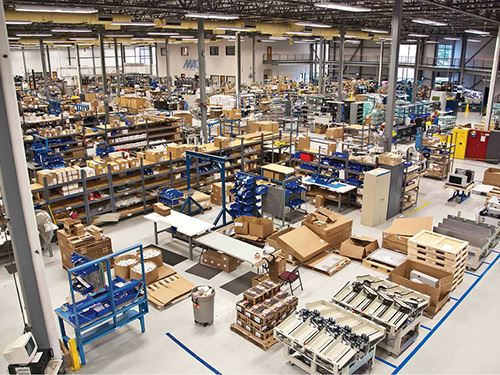
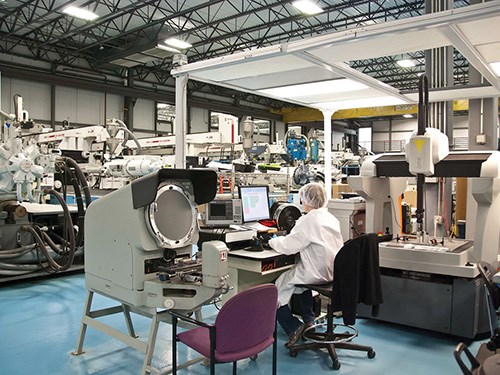
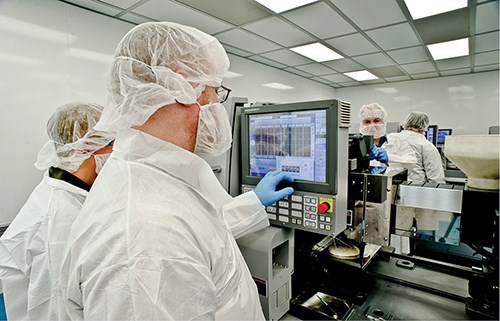
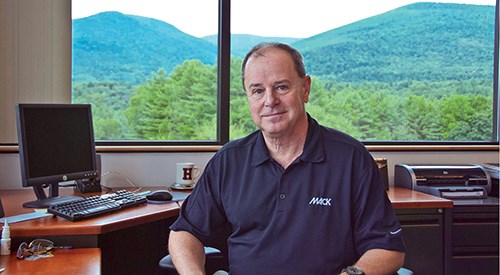
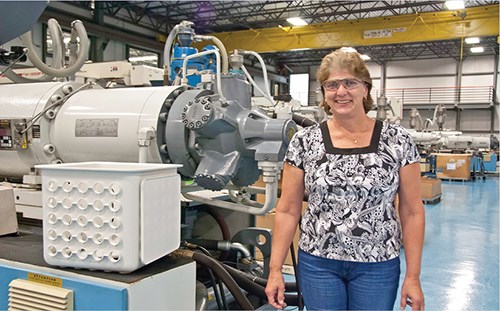
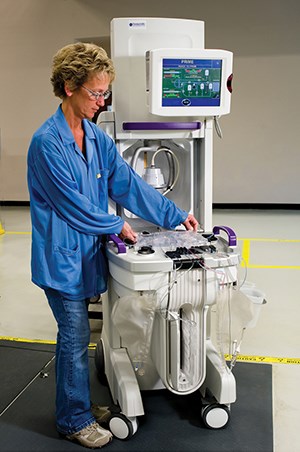
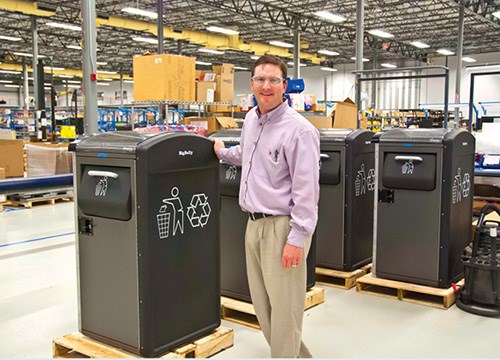
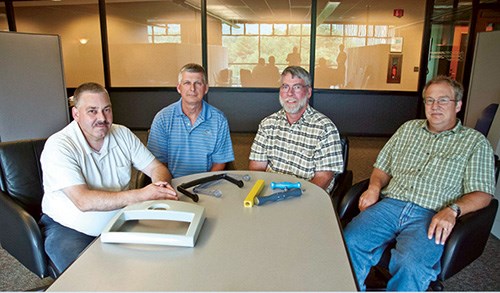







.jpg;maxWidth=600)















 (2).jpg;maxWidth=300;quality=90)



